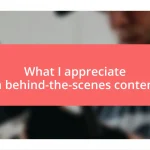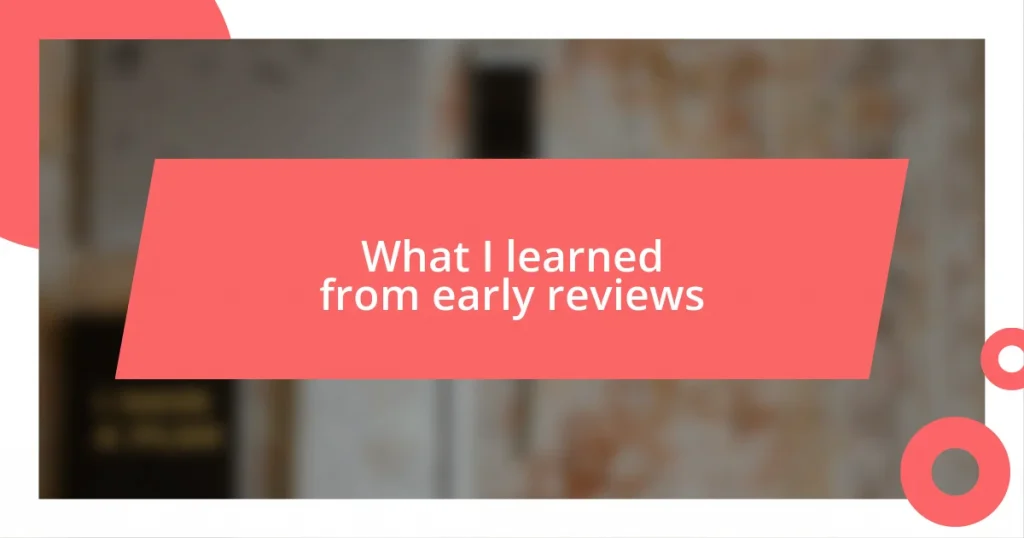Key takeaways:
- Understanding and analyzing social media insights, such as engagement rates and demographics, can significantly enhance connection and strategy with the audience.
- Choosing the right metrics, including engagement rate and conversion rate, is essential for refining content strategy and fostering authentic interactions.
- Adjusting tactics based on past campaign performance and audience preferences leads to improved engagement and relevancy in social media content.

Understanding Social Media Insights
Understanding social media insights is like holding a magnifying glass to your audience’s behaviors and preferences. I remember when I first started paying attention to analytics; it felt overwhelming. But once I began to decode the numbers, it was eye-opening. They weren’t just stats but stories about my followers and what resonated with them.
Have you ever wondered why some posts take off while others fizzle? The difference often lies in the insights provided by social media platforms. For instance, I once posted a picture of my morning coffee; it received a fraction of the engagement compared to a candid shot of my workspace. That experience taught me to dig deeper into metrics like engagement rates and demographics, revealing the content that truly connects with my audience.
Through analyzing these insights, you can tailor your approach and strategy to better meet your audience’s needs. Tracking what times yield the most interaction or what types of content lead to shares has transformed how I create posts. It amazes me how a few simple changes, guided by insights, can elevate the conversation and foster genuine connections online.

Choosing the Right Metrics
Choosing the right metrics is essential to optimizing your social media strategy. I learned this the hard way when I focused solely on likes, thinking they were the ultimate sign of success. But then I discovered that a post with fewer likes but more comments led to deeper conversations. It was an eye-opener, showing me that engagement goes beyond surface numbers.
When selecting which metrics to track, consider these crucial factors:
- Engagement Rate: This reflects how your audience interacts with your content, showcasing genuine interest.
- Reach vs. Impressions: Reach measures how many people saw your post, while impressions tell you how many times it was displayed. Understanding both helps gauge overall visibility.
- Click-Through Rate (CTR): This indicates how well your content drives traffic, crucial for further engaging your audience.
- Demographics: Knowing who engages with your content allows for more personalized and effective strategies.
- Conversion Rate: This metric focuses on how many interactions lead to desired actions, such as signing up for a newsletter.
Each of these metrics has shaped my approach, helping me prioritize what truly matters in connecting with my audience. I remember being surprised to find my storytelling posts resulted in higher engagement than promotional ones. By examining the right metrics, I’ve been able to refine my content strategy, leading to more authentic interactions and growing relationships.

Analyzing Audience Engagement
Analyzing audience engagement is a fascinating journey that can unveil what truly resonates with your followers. I can recall a time when I noticed a spike in engagement after I began sharing behind-the-scenes moments from my daily life. It was like a light bulb went off; people craved authenticity and a glimpse into the real me. Tracking these patterns not only boosted my engagement but also deepened my connection with my audience.
Another critical aspect of analyzing audience engagement is monitoring the time and day when your audience is most active. For a while, I would post at random times, hoping for the best. When I finally tested posting during peak hours indicated by insights, my engagement soared. It felt empowering to take control of my strategy based on data rather than guesswork. This experience demonstrated how precise adjustments, rooted in evidence, can lead to meaningful conversations and community-building.
Here’s a straightforward comparison table that highlights various engagement metrics I consider essential:
| Metric | Importance |
|---|---|
| Engagement Rate | Indicates audience interest and interaction |
| Reach | Measures visibility to unique users |
| Click-Through Rate (CTR) | Shows effectiveness in driving user action |
| Demographics | Helps tailor content for audience segments |
| Conversion Rate | Measures success in achieving goals (e.g., sign-ups) |

Identifying Trends and Patterns
Identifying trends and patterns in social media insights feels like piecing together a puzzle. I remember the satisfaction I felt when I noticed that video content consistently outperformed static images on my profiles. This realization led me to iterate my strategy, focusing more on animated graphics and storytelling in video format. It’s amazing how small shifts based on emerging patterns can lead to more significant results.
In another instance, I stumbled upon a recurring theme in my comments; followers frequently asked about my daily routines. This pattern not only revealed what captivated my audience but also provided inspiration for new content. I began incorporating more lifestyle posts, and the engagement surged. Isn’t it fascinating how understanding your audience’s inquiries can guide your content creation in exciting new directions?
I also make it a habit to analyze the seasonal trends in engagement—they’ve proven invaluable. For example, I found that my content around the holidays drew higher interaction compared to other times of the year. This insight inspired me to create themed posts that resonate during festive periods. Have you ever considered how seasonal patterns might impact your own engagement? Recognizing these trends can pave the way for campaigns that truly shine in the spotlight.

Implementing Data-Driven Strategies
Implementing data-driven strategies has transformed the way I approach my social media presence. One strategy that stands out for me is A/B testing my posts. I recall conducting an experiment with two different captions for the same image. The first caption was playful, while the second took a more informative tone. The results were eye-opening; the informative caption performed significantly better. This taught me that testing variations can reveal what truly connects with my audience, allowing me to fine-tune my voice.
Another powerful strategy I employ is using analytics to understand conversion rates from specific campaigns. I remember running a limited-time offer that resulted in a notable boost in sign-ups. By tracking how my followers interacted with that post and compared it to my regular content, I realized the importance of urgency in messaging. It was an ‘aha’ moment that showed me how immediate calls to action, driven by data, directly influence user behavior. Have you tried creating a sense of urgency in your campaigns? It’s worth exploring!
Lastly, I find that aligning my content calendar with analytical insights fosters consistency and relevance. For instance, after noticing a dip in engagement during a certain period, I decided to schedule my more dynamic content for those times. The result? An uptick in interaction as my audience seemed more engaged with content that resonated with their evolving interests. When was the last time you evaluated your content calendar? Adjusting it based on insights can breathe new life into your strategy.

Measuring Campaign Effectiveness
Measuring the effectiveness of my social media campaigns is like checking the pulse of my engagement with followers. I vividly recall one particular campaign where I launched a poll for product feedback. The results showed that a surprising number of my audience preferred a specific feature I hadn’t initially prioritized. This experience not only validated my approach but also demonstrated how directly engaging with my audience can yield actionable insights. Have you ever realized that your audience knows exactly what they want?
I also use metrics like reach, engagement rate, and conversion to gauge a campaign’s success. After running a photo contest, I was ecstatic to see engagement rates soar. Evaluating the number of shares and comments revealed that it resonated deeply with my followers, signaling me to incorporate similar initiatives in the future. Isn’t it incredible how tracking these numbers can lead to revelations about what truly captivates your audience?
Finally, I find it helpful to align my results with my initial goals. During a recent campaign aimed at increasing my newsletter sign-ups, I noted the importance of evaluating both the quantitative data and qualitative feedback. The insightful comments from my followers provided depth that numbers alone couldn’t convey. By blending these perspectives, I refine my strategies and create more resonant campaigns. How do you ensure you’re meeting your campaign objectives? Reflecting on both numbers and narratives can enhance your overall strategy.

Adjusting Tactics for Success
Adapting my tactics based on social media insights has been crucial for my success. I once faced a lull in engagement on my posts, which sparked a pivotal change. By analyzing my peak engagement times and experimenting with posting during those hours, I saw a significant resurgence in interactions. Isn’t it fascinating how timing can transform your strategy?
I’ve also learned the value of pivoting my content style. When I noticed a drop in likes on my more polished posts, I decided to be more candid and relatable in my approach. I remember sharing a behind-the-scenes moment of my daily workflow, and the engagement skyrocketed. This experience reinforced my belief that authenticity resonates. Have you considered how your audience perceives your authenticity?
Furthermore, I continually revisit my audience demographics to tweak my messaging. A while back, I noticed a shift in age groups among my followers. This prompted me to adjust the content topics I focused on, creating a series of posts that appealed to the new audience. The positive feedback was immediate, illustrating how vital it is to stay attuned to who’s engaging with your content. Some may underestimate the power of audience analysis, but have you recognized its potential in your strategies?















